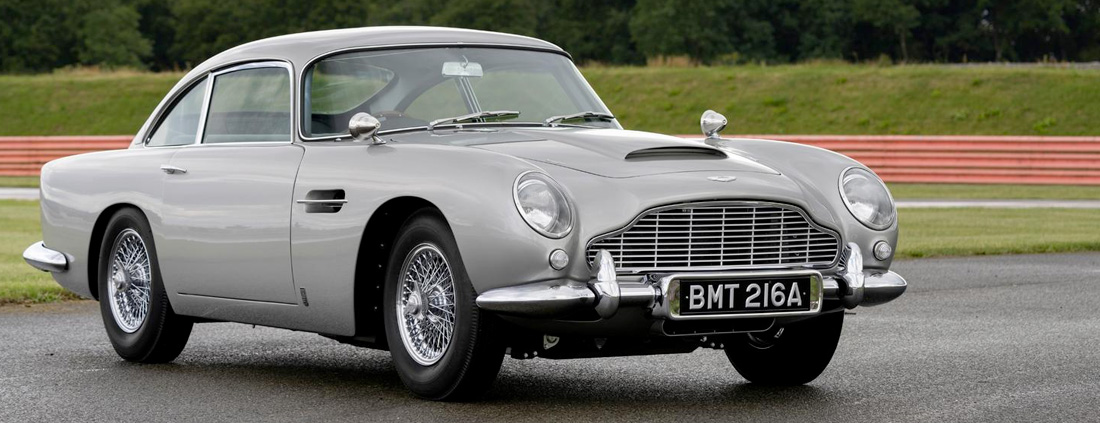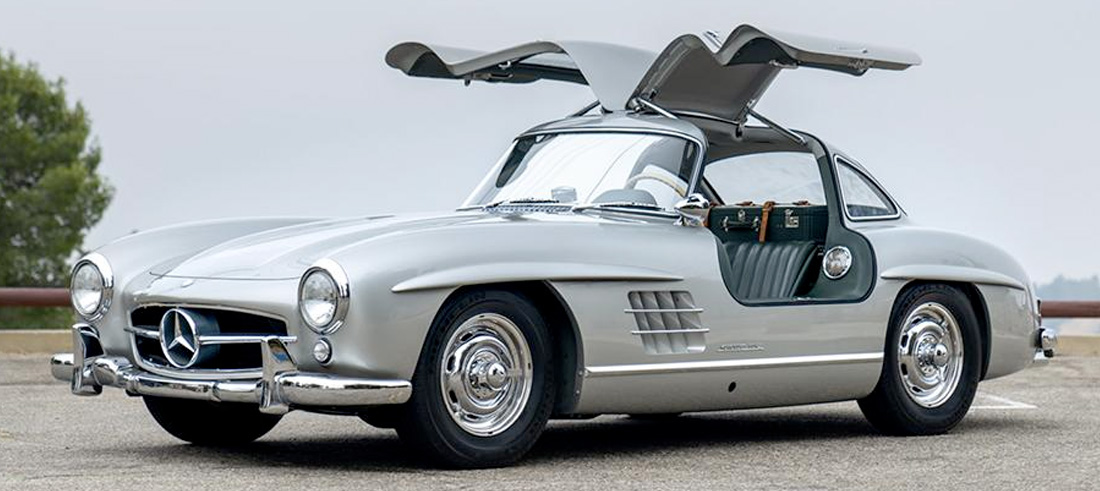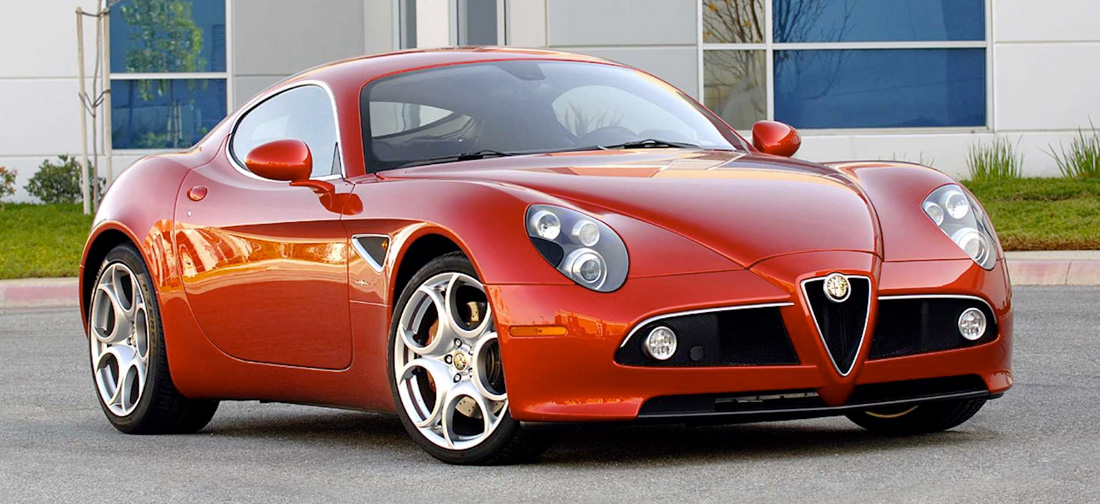The World’s Top Ten All Time Most Beautiful Cars
Okay, this was a tough one. In fact, there have been some heated arguments regarding the “most beautiful car” title. We fought over BMWs, Cadillacs, Mustangs and a host of other brands — and at long last, we’ve agreed on the following list. One last note: while the editors here at MiamiCars.com finally found common ground and agreed to the following list, we couldn’t agree in the #1 all-time most beautiful car, so they appear here in no particular order.
Don’t agree? Tell us where we went wrong!
Jaguar E-Type The Jaguar E-Type, also known as the Jaguar XK-E, was produced by Jaguar Cars from 1961 to 1975. It was a successor to the highly successful Jaguar XK 150, and it is widely regarded as one of the most beautiful cars ever made.
The development of the E-Type began in the late 1950s, and it was introduced to the public at the Geneva Motor Show in March 1961. The car was an instant sensation, with its sleek lines, long hood, and distinctive grille. Enzo Ferrari reportedly called it the most beautiful car ever made. The E-Type was available as a roadster or a coupe, and it was powered by a 3.8-liter straight-six engine that produced 265 horsepower. It was capable of reaching speeds of up to 150 mph and could accelerate from 0 to 60 mph in 6.9 seconds.
In 1964, the E-Type was updated with a larger 4.2-liter engine and a number of other improvements, including a fully synchronized gearbox and better brakes. The car remained in production until 1975, when it was replaced by the Jaguar XJS. Today, the Jaguar E-Type is considered a classic car and is highly sought after by collectors. Its timeless design and impressive performance have made it an enduring icon of the automotive industry.
Ferrari 250 GTO The Ferrari 250 GTO was produced by Ferrari from 1962 to 1964. It is widely regarded as one of the most valuable and desirable cars ever made, with only 39 examples produced. The development of the 250 GTO was driven by Ferrari’s desire to compete in the FIA’s GT racing class. The car was designed by engineer Giotto Bizzarrini and chief designer Sergio Scaglietti, and it featured a lightweight body made from aluminum and a powerful 3.0-liter V12 engine that produced 300 horsepower.
The 250 GTO made its racing debut in 1962, and it quickly proved to be a formidable competitor, winning a number of prestigious races, including the Tour de France and the 12 Hours of Sebring. Despite its racing success, the 250 GTO was not initially a commercial success, and Ferrari struggled to sell all 39 examples. However, over time, the car became increasingly sought after by collectors, and it is now one of the most valuable cars in the world, with examples selling for tens of millions of dollars at auction.
The 250 GTO’s timeless design, exceptional performance, and racing success have made it an icon of the automotive industry, and it remains a highly prized possession for collectors and enthusiasts alike.
Aston Martin DB5 The Aston Martin DB5 was produced by the British manufacturer Aston Martin from 1963 to 1965. It is perhaps best known for its appearance in the James Bond film “Goldfinger” and has become an icon of the automotive industry.
The DB5 was introduced as a successor to the Aston Martin DB4, and it featured a number of improvements, including a new ZF five-speed gearbox and a more powerful 4.0-liter straight-six engine that produced 282 horsepower. The car also had a sleeker and more aerodynamic design, with a distinctive grille and sloping roofline. In addition to its impressive performance, the DB5 was known for its luxurious interior and advanced features, such as power windows, air conditioning, and a heated rear window.
The DB5’s appearance in the 1964 James Bond film “Goldfinger” cemented its place in popular culture and helped to establish it as one of the most iconic cars of all time. In the film, the car was equipped with a range of spy gadgets, including machine guns, tire slashers, and an ejector seat. Today, the Aston Martin DB5 remains a highly prized possession for collectors and enthusiasts alike, with examples selling for millions of dollars at auction. The car’s timeless design and connection to popular culture have made it a beloved icon of the automotive industry.
Lamborghini Miura The Lamborghini Miura was produced by the Italian manufacturer Lamborghini from 1966 to 1973. It is widely regarded as one of the most beautiful and influential cars of all time, and it helped to establish Lamborghini as a major player in the automotive industry.
The Miura was designed by Marcello Gandini of the Italian design firm Bertone, and it was named after the famous Spanish fighting bull breeder Don Eduardo Miura. It was the first production car to have a mid-engine layout, which placed the engine behind the driver and in front of the rear wheels. This layout would become the standard for high-performance sports cars in the years that followed. The Miura was powered by a 3.9-liter V12 engine that produced up to 385 horsepower, depending on the model. It was capable of reaching speeds of up to 180 mph (290 km/h) and could accelerate from 0 to 60 mph (97 km/h) in just 6.5 seconds.
The Miura was also known for its stunning design, which featured a low-slung, aggressive body with sharp lines and a wedge-shaped profile. The car was an instant sensation when it was first unveiled at the 1966 Geneva Motor Show, and it helped to establish Lamborghini as a serious rival to Ferrari. Today, the Lamborghini Miura remains a highly prized possession for collectors and enthusiasts, with examples selling for millions of dollars at auction. Its timeless design and groundbreaking engineering have ensured its place as an icon of the automotive industry.
Porsche 911 The Porsche 911 has been manufactured Porsche since 1963. It is one of the most iconic and recognizable cars in automotive history, and it has become synonymous with Porsche’s reputation for engineering excellence and performance.
The 911 was originally developed as the successor to the Porsche 356, and it featured a rear-engine layout and a unique body design that quickly became a trademark of the Porsche brand. The car was powered by a six-cylinder boxer engine and had a distinctive sound and handling characteristics that made it popular with enthusiasts and racing drivers alike. Over the years, the 911 has undergone a number of changes and improvements, with each new generation incorporating the latest technologies and engineering advancements. Despite these changes, the car has remained true to its original concept, with a focus on performance, driving pleasure, and distinctive styling.
The Porsche 911 has had numerous racing successes over the years, including multiple wins at the 24 Hours of Le Mans and other prestigious events. It has also become a cultural icon, with appearances in films, television shows, and popular music. Today, the Porsche 911 remains one of the most sought-after sports cars in the world, with a loyal fan base and a reputation for performance, reliability, and engineering excellence.
Mercedes-Benz 300SL Produced by the German manufacturer Mercedes-Benz from 1954 to 1963, the Mercedes-Benz 300SL is widely regarded as one of the most iconic and influential cars of all time. More than any MB model, the 300SL helped to establish Mercedes-Benz as a major player in the automotive industry.
The 300SL was introduced as a production version of the Mercedes-Benz W194 race car, which had achieved success in a number of international racing events. It featured a number of innovative design elements, including a tubular spaceframe chassis, gull-wing doors, and a fuel-injected, 3.0-liter straight-six engine that produced up to 240 horsepower.
The car was capable of reaching speeds of up to 160 mph (257 km/h) and could accelerate from 0 to 60 mph (97 km/h) in just 8.8 seconds. It was also known for its sleek and aerodynamic design, which featured a low-slung body with smooth curves and distinctive styling details. The 300SL’s gull-wing doors, in particular, became an iconic design feature and helped to establish the car as a cultural icon. Today, the 300SL is highly prized by collectors and enthusiasts, with examples selling for millions of dollars at auction.
In addition to its racing success and cultural impact, the Mercedes-Benz 300SL also helped to establish a tradition of high-performance sports cars at Mercedes-Benz that continues to this day. Its innovative engineering and timeless design have ensured its place as one of the most important cars in automotive history.
Alfa Romeo 8C The Alfa Romeo 8C is a series of high-performance sports cars produced from 1931 to 1939 and again from 2007 to 2010. The 8C name is derived from the car’s eight-cylinder engine, which was a hallmark of the series.
The original Alfa Romeo 8C was introduced in 1931 and quickly gained a reputation as one of the most successful and innovative racing cars of its era. It featured a powerful eight-cylinder engine with supercharged induction that produced up to 220 horsepower, as well as advanced suspension and braking systems that helped to deliver outstanding handling and performance. The 8C went on to achieve numerous racing victories, including wins at the prestigious 24 Hours of Le Mans and Mille Miglia events. Its success on the track helped to establish Alfa Romeo as a major force in the automotive industry and cemented the company’s reputation for performance and innovation.
In 2007, Alfa Romeo introduced a new 8C sports car, which was designed as a tribute to the original 8C. The new 8C featured a 4.7-liter V8 engine that produced up to 450 horsepower, as well as advanced suspension and braking systems that delivered outstanding handling and performance. Only 500 examples of the new 8C were produced, and each was hand-built to order. The car was highly sought-after by collectors and enthusiasts, and it helped to establish Alfa Romeo as a major player in the high-performance sports car market. Today, both the original Alfa Romeo 8C and the new 8C are highly prized by collectors and enthusiasts, with examples selling for millions of dollars at auction. Their innovative engineering and racing success have ensured their place as icons of the automotive industry.
Bugatti Type 57SC Atlantic The Bugatti Type 57SC Atlantic is a highly coveted and iconic automobile that was produced by the French luxury car manufacturer Bugatti from 1936 to 1938. It is widely considered to be one of the most beautiful and desirable cars ever made, and only four were ever produced.
The Type 57SC Atlantic was designed by Jean Bugatti, son of Bugatti founder Ettore Bugatti. The car was based on the Type 57S chassis and was intended to be a high-performance grand tourer. The bodywork was made of lightweight magnesium alloy and was characterized by its flowing lines, distinctive dorsal seam, and riveted body panels. The car also featured a number of innovative design elements, such as a curved windscreen and retractable rear window.
The first Type 57SC Atlantic was completed in 1936 and was sold to British banker and racing enthusiast Victor Rothschild. The second car was sold to French politician and racing driver Pierre Louis-Dreyfus, and the third car was sold to American socialite and racing driver Briggs Cunningham. The fourth and final car was built for Bugatti’s own personal use, but it was later sold to an undisclosed buyer. Despite its high performance and striking design, the Type 57SC Atlantic was not a commercial success, partly due to its high price and the limited production run. However, the car has since become a legend among car enthusiasts and collectors, with one example selling for a record-breaking $43.7 million in 2010. The surviving Type 57SC Atlantics are now considered to be among the most valuable and sought-after cars in the world.
Chevrolet Corvette Stingray (C2) The Chevrolet Corvette Stingray (C2), produced by Chevrolet from 1963 to 1967 is widely considered to be one of the most iconic and influential sports cars in automotive history.
The C2 Corvette was introduced in 1963 and featured a radical new design with a sleek, low-slung body and distinctive “split rear window” on the coupe model. It was also the first Corvette to feature independent rear suspension, which greatly improved handling and ride quality. The C2 was available with a range of engines, from the base 250-horsepower 327 V8 to the top-of-the-line 425-horsepower 427 V8.
In 1965, the Corvette received a major refresh that included new styling, improved braking, and a more powerful 396 cubic inch (6.5-liter) V8 engine. This model, known as the “Big Block” Corvette, was capable of producing up to 425 horsepower and was one of the most powerful cars of its era.
In 1967, the final year of C2 production, the Corvette received another major redesign with new body panels, a reworked interior, and a range of new engines, including the 435-horsepower 427 V8. The 1967 Corvette is considered by many to be the pinnacle of the C2 generation.
The C2 Corvette was a commercial success and helped establish the Corvette as a true American sports car. Its sleek, distinctive styling and impressive performance made it a favorite of car enthusiasts and collectors. Today, the C2 Corvette remains highly coveted among collectors and is considered a classic of the golden age of American muscle cars.
Shelby Cobra The Shelby Cobra, also known as the AC Cobra, is a high-performance sports car that was produced by British manufacturer AC Cars and later modified by American racing driver and entrepreneur Carroll Shelby. The car is widely considered to be an icon of American automotive history.
The Shelby Cobra was first introduced in 1962 and was based on the AC Ace, a small British sports car. Shelby modified the Ace by replacing its engine with a more powerful V8 engine from American carmaker Ford. The first Shelby Cobra was powered by a 260-cubic inch (4.3-liter) V8 engine, which was later upgraded to a 289-cubic inch (4.7-liter) engine in 1963.
In 1965, the Shelby Cobra received a major upgrade with the introduction of the 427-cubic inch (7.0-liter) V8 engine. This model, known as the Cobra 427, was one of the fastest and most powerful cars of its time, capable of reaching speeds of up to 165 mph (266 km/h).
Despite its impressive performance, the Shelby Cobra was not a commercial success due to its high price and limited production. Only a few hundred were ever built, making it a rare and highly sought-after car today.
The Shelby Cobra was also a successful racing car, winning numerous races and championships in the 1960s. In 1965, Shelby won the FIA World Manufacturers Championship for GT Cars with the Cobra 427.
The legacy of the Shelby Cobra has continued to this day, with the car remaining a favorite of car enthusiasts and collectors. The Cobra has been featured in numerous films, TV shows, and video games, and has inspired countless imitators and replicas. Shelby’s legacy as a racing driver and entrepreneur has also had a lasting impact on the automotive industry, with his name and brand becoming synonymous with high-performance American cars.
Got a better list? Hit us up and we’ll publish YOUR list!



![[Toyota Times] Toyota Takes Top 5! Behind the Scenes of the Rally Finland Triumph](https://www.miamicars.com/wp-content/uploads/2025/09/newscast_145_1280_720_en-218x150.jpg)


![[Toyota Times] Summer Days for Safety – Considering “What we can do right now” To Reduce Accidents](https://www.miamicars.com/wp-content/uploads/2025/08/newscast_141_1280_720_en-218x150.jpg)















